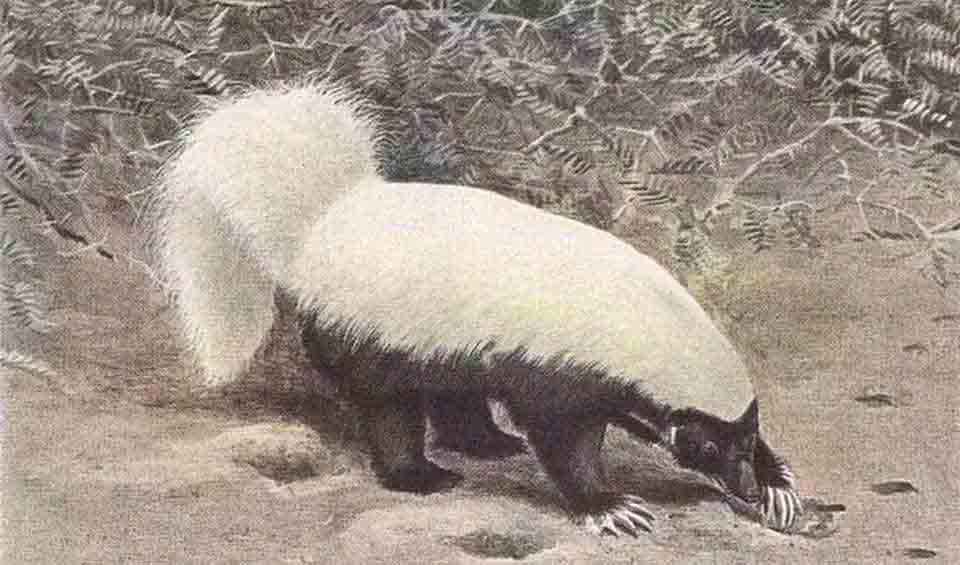Characterized by its striking black coat, this skunk boasts a broad white stripe that extends from the top of its head down to its tail, culminating in a tail that is entirely white. This coloration not only provides a stark contrast to the skunk’s dark body but also serves as a warning to potential predators about the skunk’s ability to defend itself with a potent spray.
One of the most notable physical characteristics of the American hog-nosed skunk is its elongated snout, which bears a resemblance to that of a hedgehog. This specialized snout is not just for show; it significantly enhances the skunk’s sense of smell, allowing it to detect food sources buried deep beneath the surface. Complementing this powerful nose are the skunk’s foreclaws, which are long, strong, and well-adapted for digging.
The American hog-nosed skunk has adapted to life in warmer climates by adopting a nocturnal or crepuscular lifestyle, avoiding the heat of the day. During the sweltering temperatures of summer, these skunks venture out only at dawn or dusk, when the air is cooler and more comfortable. This behavior helps them conserve energy and stay hydrated. In contrast, during the winter months, when the temperatures are milder, they are more likely to be active during the daytime, taking advantage of the warmer sun.
When it comes to foraging, the American hog-nosed skunk exhibits a particular behavior pattern. It engages in rooting, a process where it uses its nose and claws to overturn rocks, soil, and debris in a methodical search for food. This behavior is essential for uncovering hidden food sources, including insects, which form a significant part of its diet. Alongside insects, the skunk’s diet is diversified with the inclusion of various types of vegetation, showcasing its omnivorous nature.
Distribution
 El Salvador
El Salvador Guatemala
Guatemala Honduras
Honduras Mexico
Mexico Nicaragua
Nicaragua United States
United StatesAnything we've missed?
Help us improve this page by suggesting edits. Glory never dies!
Suggest an editGet to know me
Terrestrial / Aquatic
Altricial / Precocial
Polygamous / Monogamous
Dimorphic (size) / Monomorphic
Active: Diurnal / Nocturnal
Social behavior: Solitary / Pack / Herd
Diet: Carnivore / Herbivore / Omnivore / Piscivorous / Insectivore
Migratory: Yes / No
Domesticated: Yes / No
Dangerous: Yes / No




